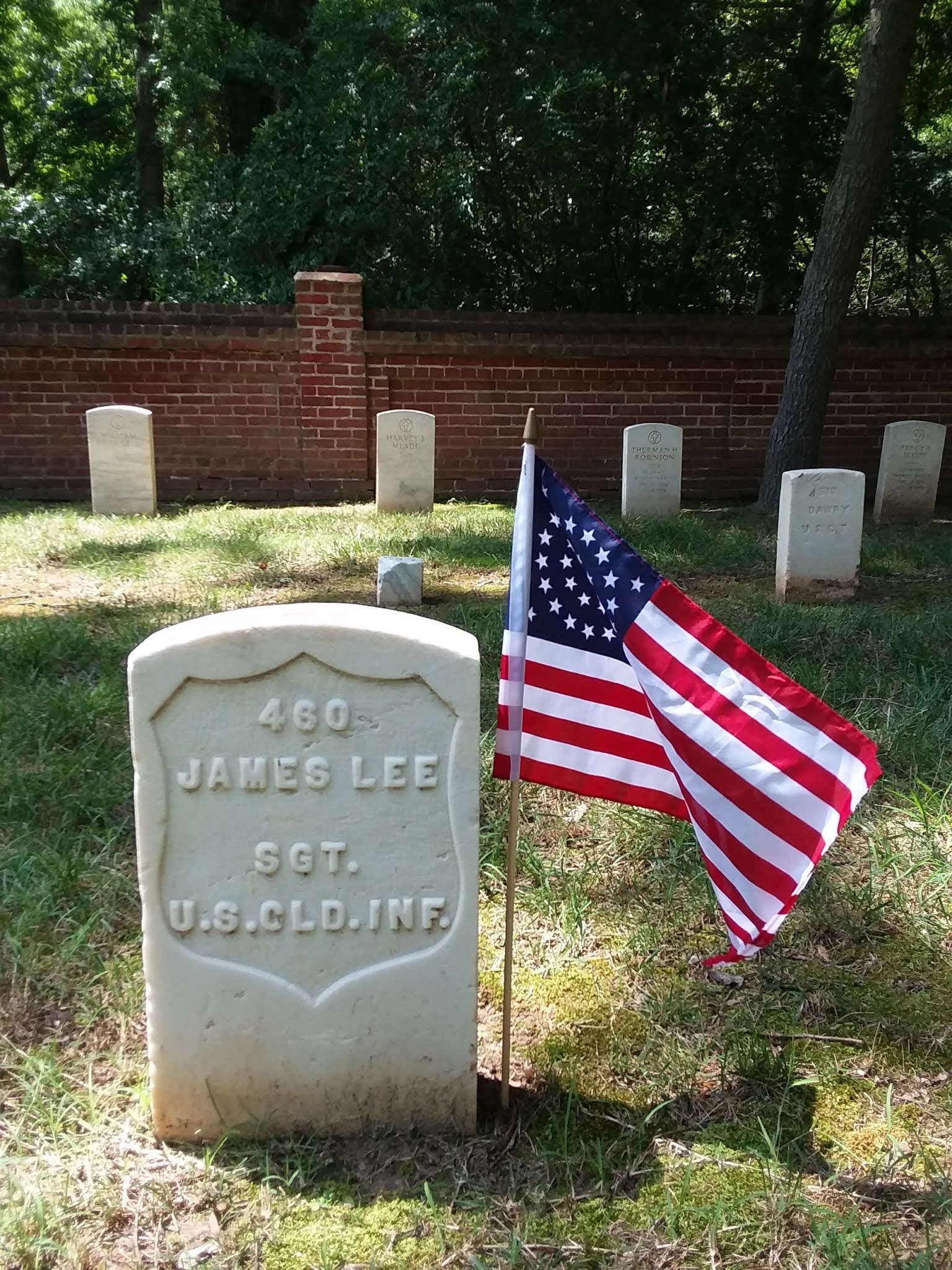
The lack of surviving pre-war personal information about men who served in Civil War armies highlights the pervading anonymity of most 19th century individuals. This was particularly true for African Americans. Before the war, enslaved men had few opportunities to leave documentation. Free black men, not considered citizens at that time, left frustratingly few records, too.
We do not know much about James Lea before he enlisted in Company K, 22nd United States Colored Infantry (USCI), however, a few historical clues do remain. Lea appears in the 1850 census. At that time he was residing in his native Chester County, Pennsylvania. Living in his father Richard’s household, the 14 year-old James’ family also included his mother, Jane, his four sisters and one brother. Unfortunately, I was unable to find Lea in the 1860 census. But he appears in an interesting 1863 draft registration record. This document helps us fill in some biographical voids. First, it tells us that Lea was not married. It also corroborates his age from the 1850 census, as the 1863 document reports his age as 26. It lists Lea’s occupation as laborer, a vague description to be sure, but this record spells his last name as Lea instead of Lee, which some other records do. Additionally, the draft registration also tells us that Lea was somewhat traveled, in that it lists men eligible for the draft in Robinson Township, Allegheny County, Pennsylvania. Allegheny County, which is near Pittsburgh in the western part of the Keystone State is quite a distance from his native Chester County, near Philadelphia, in the east.
James Lea must have made a final trip back east, as his compiled service records state that he enlisted in Philadelphia on January 4, 1864. Joining up for three years, the 27-year old, six-foot, one-inch Lea gave his pre-war occupation as “brickmaker.” About a month and a half into his career as a soldier, Lea received a promotion to sergeant.

Lea fought with the 22nd USCI during the June 15, 1864, assaults on Petersburg. The regiment braved their first baptism in fire marvelously, capturing several Confederate positions and pieces of artillery. During the summer of 1864, Lea served on detached duty at Dutch Gap, apparently working on Maj. Gen. Benjamin Butler’s massive canal project. Although some of his comrades became casualties from the brutal Confederate artillery and sharpshooter fire, Lea remained unscathed.
The 22nd USCI was among the regiments that made up the three brigades of the Third Division of the XVIII Corps in the Army of the James. Tabbed in Maj. Gen. Butler’s battle plan to attack the Confederate defenses that protected the New Market Road, just southeast of Richmond, Virginia, the Third Division started toward the enemy through a misty fog on the morning of September 29, 1864. Acting as skirmishers and supporting the left flank of the Third and Second Brigades during their frontal attacks, the soldiers of the 22ndalso took significant casualties. During the final push, and ultimate breakthrough, the 22nd led the attack of the First Brigade (Col. John H. Holman’s), which also included the 1st and 37th USCI regiments. Capt. Albert Janes, in writing the after-action report for the 22nd USCI, stated that: “The enemy was found to be in force beyond the woods in rifle-pits covering the New Market road. The rifle-pits had an abatis in front. As the charging column came up to the support of the skirmish line a part of the regiment assembled on the right and moved forward into the works, driving the enemy in confusion from them.”
It is unknown whether Sgt. James Lea received his death wound, or wounds, fighting as a skirmisher or in the brigade’s assault. All that his service records tell us is that he was “killed in action near New Market road, Va. Sept. 29, 1864.” Lea was one of the 11 men from the 22ndUSCI either killed or who ultimately died from their wounds at the Battle of New Market Heights.

Today, Sgt. James Lea rests in peace in grave number 460 in Fort Harrison National Cemetery. Despite the misspelled last name on his headstone, his story is without doubt one of service and sacrifice. We remember Sgt. Lea, for his commitment to the ideals upon which the United States was founded. It is only too sad that 156 years later we as a nation are still trying to figure out how to consistently practice those founding principles.

